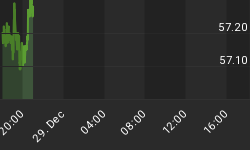Two economic fallacious are gaining ground in Australia. The first one is that free trade is hollowing out the economy: the second one has that we will run out of resources, particularly oil. At least the first fallacy is plausible; the second one, however, is pure tripe.
The Australian Bureau of Statistics show that for the March quarter the value imported consumer and business products jumped by 16 per cent. The Australian Industry Group argues that by next December 25 per cent of the country's manufacturing base will have moved abroad. This will mean a loss of 70,000 manufacturing jobs if we include the 30,000 that were lost last year.
As if to ram home the point that imports are destroying our manufacturing base figures show that exports are weakening while imports of consumer goods are strengthening. Oddly enough, or so it would appear, imports of capital goods grew by 20 per cent in the March quarter.
Some economists are now arguing that if consumer demand rises from last year's 2.75 per cent to more than 4 per cent this would overheat the economy. Other economists arguing that it is too soon to take account of excessive and consumer spending share a common link never occurs.
It is a truism that in order to buy something one must be able to spend. In order to spend, therefore, one must have access to purchasing power. So where is all this ability to command goods coming from? Let us take a look at the period March 2004 to February 2006. In that time M1 grew by 19 per cent, bank deposits by 14 per cent and the Reserve Bank's assets by 27 per cent. (In order to obtain assets the bank must issue cheques and by doing so it expands the money supply). From March 1996 to February 2006 M1 grew by 111 per cent while bank deposits expanded by 123 per cent.
My point is that monetary expansion has been driving the current account deficit. In other words, we have been exporting dollars. So when an idiot like Tim Colebatch, economics editor of The Age whines about Australia "selling off the farm" (It's back to selling off the farm, and more than ever before, 4 April 2006) he is really complaining about the return of our dollar. In plain English, foreigners who acquired Australian dollars are now using those dollars to buy Australian assets. In a sense, therefore, these assets are being exchanged for imported goods.
This brings us to manufacturing. Even professional economists have said some pretty silly things with respect to factories moving offshore. Their first response to a factory moving its operations abroad is to state that this is the market in operation. Sometimes they will say that it is normal for manufacturing in an advanced economy to shrink while service industries grow.
There is no economic law stating that manufacturing must shrink in absolute terms as an economy becomes more advanced. What can be said with certainty is that as a country becomes more capital intensive its more labour intensive activities in the tradable sector will tend to migrate to labour intensive countries. This in no way implies that manufacturing in the capital intensive country will shrink, only that its capital structure will change its shape.
However, the above assumes that countries are running sound monetary policies. Once reckless monetary policies are implemented the economic landscape changes. For example, if more and more spending is directed to imports at the expense of investment then the capital structure will shrink. Mountifort Longfield raised this question in his In his book Three Lectures on Commerce and one on Absenteeism (1835).
He argued that if absentee landlords spent their rents on buying French dresses and lace for their female companions instead of investing in their Irish farms this could alter the factorial terms of trade for Ireland. This in turn could bring about an unfavourable change in the structure of production. In my view the same thing could happen if the increased spending on imported goods was due to a monetary expansion.
In 1970 Samuel Brittan, a well-known economist with the Financial Times and a Keynesian by training, was astute enough to make the same observation. He also wrote an excellent description of the situation:
If an imbalance is allowed to persist too long, a deficit country acquires an excessively home-based industrial and commercial structure while the surplus country becomes excessively export-oriented... This makes adjustment needlessly painful and difficult when it does come, and there is the risk of high transitional unemployment while resources are being transferred. Shop assistants in Britain cannot be transferred overnight to engineering establishments which do not yet exist while Volkswagen workers cannot move straight away into the German social services. These very facts themselves provide ammunition for those who oppose parity changes, and the eventual adjustments are all the more sudden and severe when at last they come.
It's my belief that this explains what is happening in Australia, America and China. Regardless of the blasé attitude of our economists Australians have every right to be concerned about the state of manufacturing. Unfortunately our economists refuse to debate the subject. Until they do the fallacy that free trade is destroying manufacturing will continue to attract support.
Note: I decided it would be better if I treated both fallacies in different articles. Therefore the second fallacy regarding scarce resources will be dealt with next week.
















